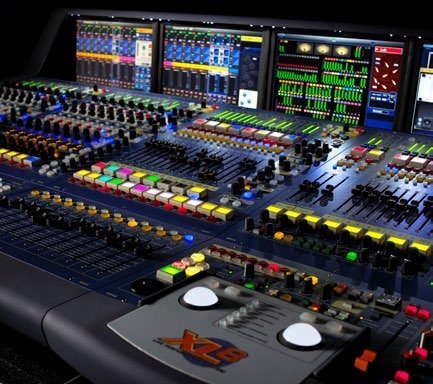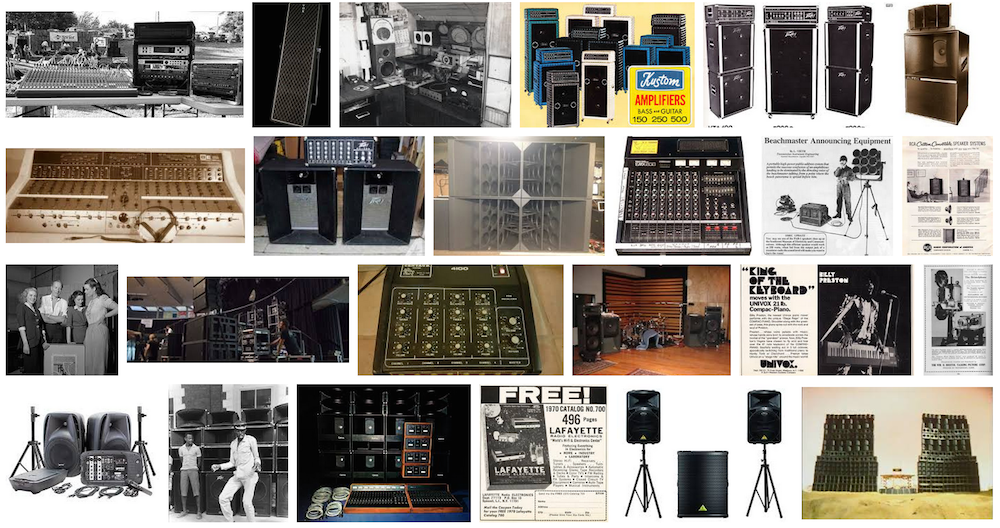News
3 Nov 2017
Comment: If I Don’t Have This Product will I Die?

Subscribe to CX E-News
Tech Tools
If I Don’t Have This Product will I Die?
The live production industry is capital intensive and significant ongoing investment is required to stay current. It is complicated by the fact that most people in the business are there because they love it. That means the decision to buy the latest gear is driven by emotion, ego and questionable financial justification.
By Simon Byrne.
When I ran Audio Solutions in Canberra, I was constantly doing the delicate dance of trying to preserve capital, cashflow and profit, versus pouring money into the latest equipment to keep us current and support growth. I quickly learned that there are two distinct markets, which have different capital strategies.
The entertainment and music sides of the business are the most interesting and exciting, but is rider driven, and not especially profitable!
Production managers are fussy, know what they want, yet the money side for most acts is tenuous. However, production company owners are often enthusiasts, so they tend to over capitalise and buy gear that is nice to have and use, great for the gig, but not sensible from a finance point of view.
This means that bands get more than what they pay for when compared to a “traditional business” and are accustomed to it. Many production suppliers are comfortable with this as they too, love the industry.
Then there is the corporate world, and it is vastly different. Corporate clients have no idea what brand of speakers you offer, and what’s more, they’ll pay you more to hire them without asking! It just has to look neat.What often ends up happening is that the corporate work funds the equipment buying for the music jobs. I used to hate it.
This is because I am the boring analytical guy, and the arguments given to justify purchases rarely stand up.
Will it get us more work? Hmmmm maybe. Will it pay for itself including the new work? Usually not. Will we make more money from our music gigs? Nope. Slightly less actually. We’ve now got more capital tied up in those gigs.Will it stop us losing work to our competition who are silly enough to buy it despite the fact the numbers don’t really stack up? Yes…damn it!
It is at this point I’m forced to capitulate and agree to fund the “investment”, but not without some rigour. New gear absolutely helps you have pride in the services you deliver, but has to be done with good judgement.
Firstly, don’t get caught in the hype. I am constantly amazed by the amount of people in this industry who apparently don’t actually listen, but instead base their purchase decisions on the latest fashionable brand or fad, and there are lot’s of them.
For example, take vintage gear for sale on Facebook. Just because it is old, doesn’t make it packed full of “vintage” warmth and goodness. I was around when a lot of the so called “vintage” gear was new and I’ve got to tell you, a lot of it we didn’t like then, let alone 30 years later. Yes there are some absolute gems from that era, but most of it is old equipment that has been retired for good reason.
In 2017 manufacturing and technology is so good that there is little bad equipment made anymore. Bad equipment is mainly driven by manufacturer cost considerations, the technical and manufacturing challenges are largely solved and it is much better than gear we used in the past.
It comes down to what features and specifications are important to you, and what you are prepared to pay.
Unfortunately, manufacturers published specifications are how shall we say…optimistic. It is difficult for them to get right from a technical standpoint because there are so many standards, real and imaginary.
Say brand A puffs up their specs, what is superior brand B to do? Be totally honest and lose some market share to brand A because apparently A’s products are better on paper? Or do they do some optimistic writing themselves? They at least need to do it with rose coloured glasses.
Frequency response plots are close to useless for this reason. The resolution of the real plot is smoothed out by the marketing department which hides important information. As buyers, we need to view specifications with some healthy scepticism.
The cost of owning and running equipment are costs that aren’t always considered. Equipment needs to be maintained, especially gear that has moving parts such as intelligent lights and rigging. Storage, casing, transport, maintenance, finance (if debt is used) are all additional costs that you take on when you buy more gear.
I’m out of running production companies now, I specialise as a TD for corporate events. So what are my rules for buying gear nowadays? It has to pay for itself within 3 months and fit in my little van. By pay for itself, I mean either an increase in income to cover the cost, or similar savings.
If it cannot meet these requirements, I crosshire instead. The benefit to this is that you tend to add the crosshire costs into your fees whereas if you own the gear, you tend not to track your capital as much as your crosshires, so you tend to wear it.
In Australia, we currently have a unique tax situation for businesses that turn over less than $2 million, simplified depreciation.
Using the simplified depreciation rules means you can immediately write-off most equipment that cost less than $20,000 each, as long as those assets are bought and installed ready for use 30 June 2018. That’s each. So as long as each item is less that $20,000 there is no limit to how much can be claimed. This is really attractive because production businesses tend to buy multiples. 20 line array elements here, 16 moving lights there and so on. All can be written off instantly.
There are rules surrounding this so professional tax advice is critical. No doubt there will be a buying frenzy June next year!
We love our gear…but as Molly says, do yourself a favour, as well as your clients, and keep an open mind when buying equipment. Don’t let the fads, egos, fear of missing out and gear lust blind you to what’s best for you.
This article first appeared in the print edition of CX Magazine October 2017, pp.34-35.
CX Magazine is Australia and New Zealand’s only publication dedicated to entertainment technology news and issues since 1991. Read all editions for free or search our archive for stories, people, tech-tips, products and production reviews www.cxnetwork.com.au
Subscribe
Published monthly since 1991, our famous AV industry magazine is free for download or pay for print. Subscribers also receive CX News, our free weekly email with the latest industry news and jobs.







